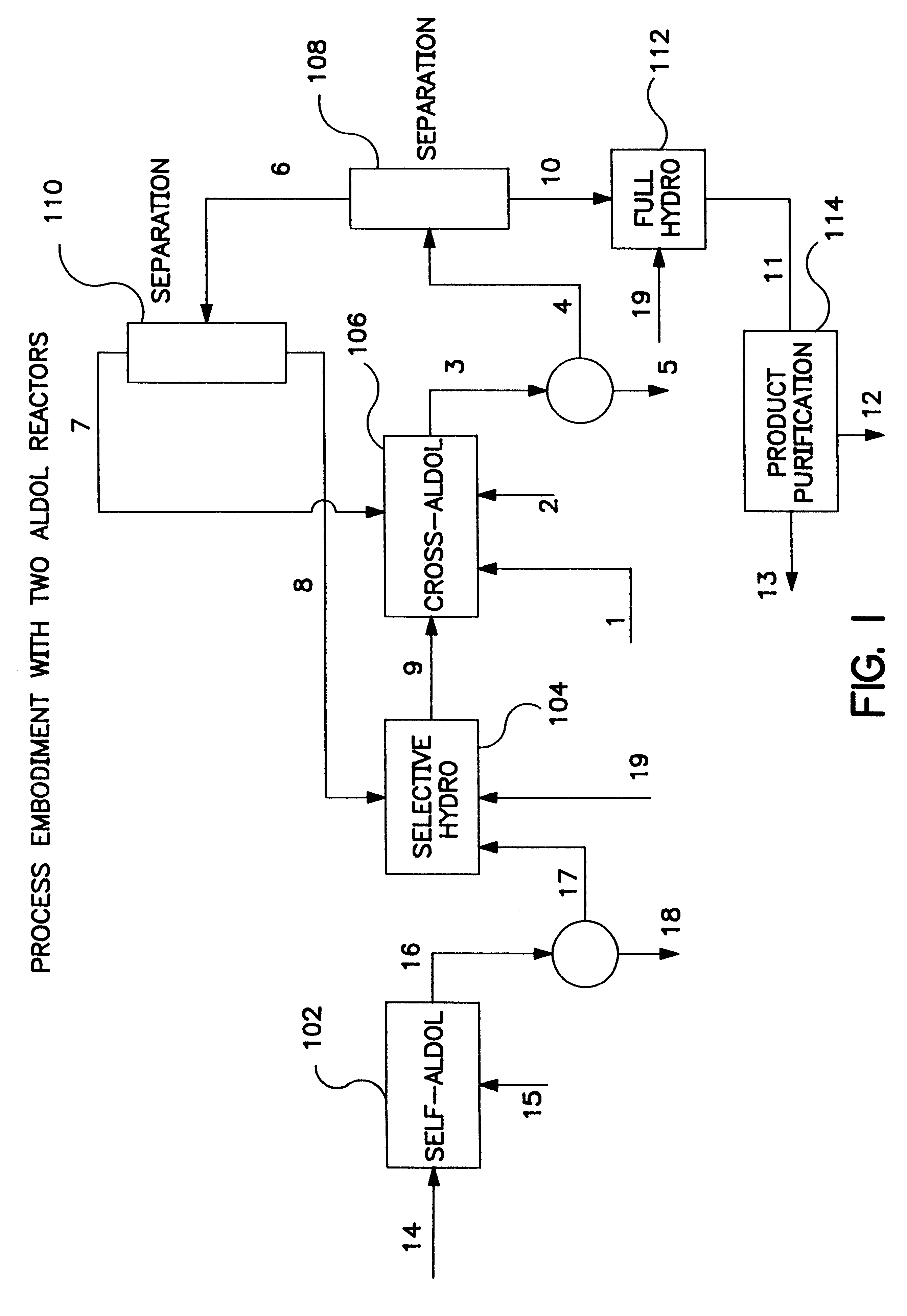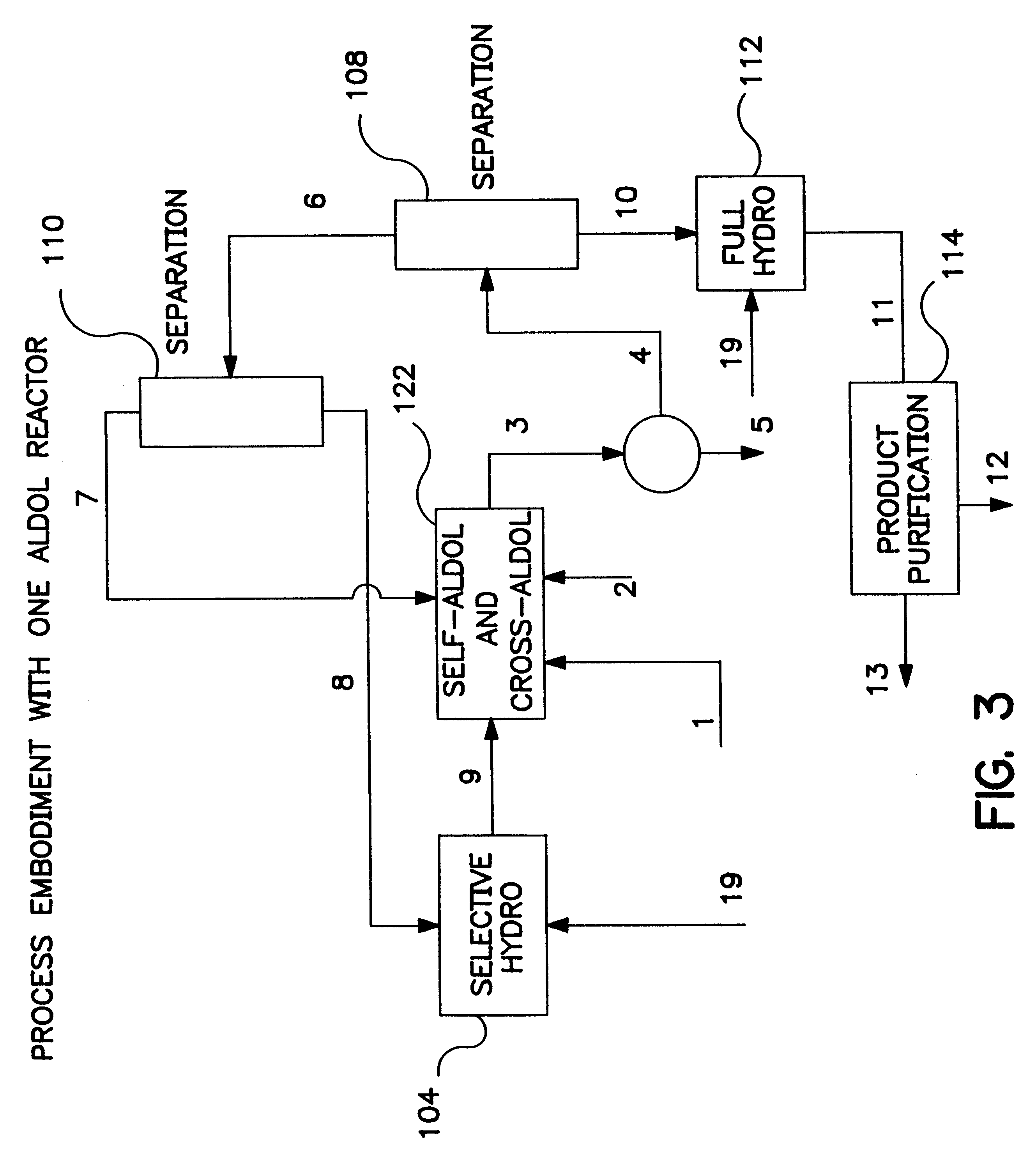Organic compounds and processes for their manufacture
a technology of organic compounds and processes, applied in chemical/physical processes, hydrogenation preparation, metal/metal-oxide/metal-hydroxide catalysts, etc., can solve the problems of reversible poisoning or accelerated catalyst deactivation, complicated recovery of desired product from reaction mixture, and certain trace components of multi-component syngas feed known to be detrimental to oxo reaction,
- Summary
- Abstract
- Description
- Claims
- Application Information
AI Technical Summary
Problems solved by technology
Method used
Image
Examples
example 2 to 8
These examples illustrate the effect of varying the Rh:PPh.sub.3 ratio.
The preparation and loading procedure of the catalyst solutions were the same as in Example 1. The solvent, tetraethylene glycol dimethyl ether (tetraglyme), which also served as an internal standard in the GC analyses of the liquid product samples, was deaerated before use. The solution volume and the total initial gas charge in each example were the same, 70 ml, and 95 mmoles, respectively. The apparatus was the same as in Example 1 except that a feed line from a volume calibrated high pressure injection bomb was mounted in the feed line between the pressure regulator valve and the autoclave. This injection bomb was used to inject known amounts of ethylene / acetylene mixtures into the autoclave. The ethylene and acetylene charges in each example were about 15.4 and 6.4 mmoles, respectively. Batch kinetic experiments were carried out at constant 1 MPa total gauge pressure and 120.degree. C. As the reaction procee...
example 8 and 9
Examples 8 and 9 demonstrate the self condensation of propanal, the first step of the aldol process. Example 9 shows that heavies formation is reduced when an inert solvent is present in the reaction mixture.
example 8
Self Condensation of Propanal
Into a 300 ml autoclave were added 66g of a molar sodium hydroxide solution. The catalyst solution was heated to 100.degree. C., then 110.83 g (1.908 mole) propanal and 2.61 g (0.0183 mole) decane (internal standard) were added in 14 minutes with 1295 rpm stirring and at 0.76 MPa to 1.86 MPa pressure. The reaction mixture was sampled for GC analysis after complete addition. The reaction mixture contained: propanal (0.29%). 2-methyl-2-pentenal (86.44%), decane (2.80%), 2,4-dimethyl-2-heptenal (0.17%), 2,4-dimethyl-2,4-heptadienal (1.90%) and heavies (8.40%).
PUM
| Property | Measurement | Unit |
|---|---|---|
| volatility | aaaaa | aaaaa |
| volatility | aaaaa | aaaaa |
| concentration | aaaaa | aaaaa |
Abstract
Description
Claims
Application Information
 Login to View More
Login to View More - R&D
- Intellectual Property
- Life Sciences
- Materials
- Tech Scout
- Unparalleled Data Quality
- Higher Quality Content
- 60% Fewer Hallucinations
Browse by: Latest US Patents, China's latest patents, Technical Efficacy Thesaurus, Application Domain, Technology Topic, Popular Technical Reports.
© 2025 PatSnap. All rights reserved.Legal|Privacy policy|Modern Slavery Act Transparency Statement|Sitemap|About US| Contact US: help@patsnap.com



